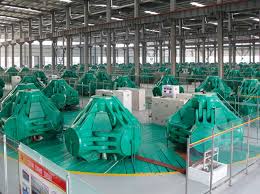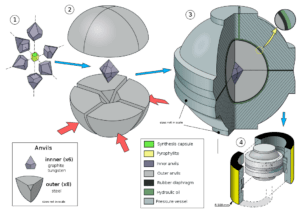How HPHT Lab-Grown Diamonds Are Created
The High Pressure, High Temperature (HPHT) method was the first technique used to grow lab-grown diamonds and closely mimics the natural process that occurs deep within the Earth’s mantle. Here’s how the HPHT process works:
-
High Pressure and Temperature
- In the HPHT process, carbon (typically in the form of graphite) is placed inside a press and subjected to extreme conditions: temperatures exceeding 1,500°C (2,732°F) and pressures of more than 1.5 million pounds per square inch (psi). These conditions replicate the natural environment where diamonds are formed over billions of years.
-
Using a Diamond Seed
- Like the CVD method, the HPHT process also starts with a diamond seed. A small diamond is placed in a press along with a source of carbon, which will be used to grow the diamond.
-
Carbon Crystallization
- Under the intense heat and pressure, the carbon source melts and begins to dissolve. The carbon atoms then bond to the diamond seed, forming a crystalline structure. Over time, the diamond grows larger as more carbon atoms attach to the crystal.
-
Cooling and Extraction
- After the diamond reaches the desired size, the press is slowly cooled to allow the diamond to stabilize. Once cooled, the newly grown diamond is removed from the press, ready for cutting and polishing.
Advantages of HPHT Diamonds:
- Mimics Natural Process: HPHT diamonds are produced under conditions that are nearly identical to
the natural formation of diamonds deep within the Earth. This allows HPHT diamonds to exhibit characteristics very similar to those found in mined diamonds.
-
Faster Growth: HPHT can produce diamonds relatively quickly compared to CVD, making it a more cost-effective method for growing larger diamonds in a shorter period of time.
-
Color Variations: HPHT diamonds can often have more noticeable color variations, such as yellow or blue tints. However, these can be treated or enhanced during the growth process to achieve more desirable colors.






